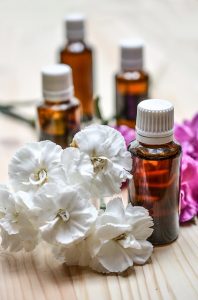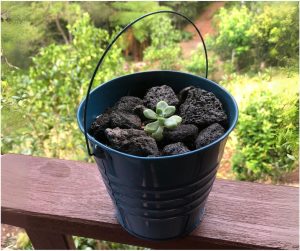This is a contentious issue among aromatherapists. There are two very different schools of thought on aromatherapy. The British model of aromatherapy (not solely practiced in Britain, but named as such because of where it’s practices originated) discourages the use of essential oils neat on the body, justifying this with outdated views about their safety. The French method (not solely practiced in France but again because of where it originated) or more commonly referred to as aromatic medicine advocates for the use of essential oils internally and externally in larger doses – and prescribed by those who are trained as… practitioners (page 197 Aromatherapy for Health Professionals 4th Edition; Shirley and Len Price). So should we dilute essential oils or are they more effective if applied neat?
When trying to explain whether to dilute essential oils or not, I use the analogy of being invited to a party. If, when you arrive at the party there were other people in exactly the same dress as you, what would you do? Well if it was me I would shrink into a corner somewhere and hide. But if you arrived at the party and you were the only one there in your fabulous, stylish dress, then they could relax, exuding confidence and power, dancing all night long. Well that’s kinda what happens with essential oil molecules if you put too many of them in the same place on your skin.

When therapeutic grade essential oils are used neat, the molecules are in higher concentrations and the old adage more is best isn’t always the case. There are applications where I would always use a neat application. This is dependent on the essential oil I choose and the purpose. For example putting Manuka essential oil on a spot on my face, I might apply it neat and not dilute but if I am massaging copaiba in to my calves after a spin class or a jog then I would mix it in to a carrier oil such as coconut oil so that it is easier to massage in and it goes further. You would need a lot of copaiba essential oil to do both calf muscles.
Not all essential oils can be used neat as some are hot oils such as cinnamon, lemongrass and oregano. These can burn the skin so always read the label to ensure appropriate application.
When essential oils are diluted they can be applied more easily, particularly over a larger area. When diluted the smaller molecules are more active and dilution can mean you use less, which saves you money.
Below is a table that demonstrates the dilution ratios.
| Dilution | Volume of Carrier Oil | Drops of Essential Oil |
| 3% | 5mls | 3 drops |
| 5% | 5mls | 5 drops |
| 2.5% | 15mls | 7-8 drops |
| 5% | 15mls | 15 drops |
| 2.5% | 30mls | 15 drops |
| 5% | 30mls | 30 drops |
Diluting Essential Oils for Children and the Elderly
Dilution is also necessary with young children, the elderly and those whose health is seriously compromised. I have a video workshop on using essential oils with babies and toddlers that talks about appropriate dilution ratios. If you are interested in learning more on that specific topic. Here is the link to register to watch it.
| Age | Amount | Dilution | Volume of Carrier Oil | Drops of Essential Oil |
| 0-4 years | 1/10 of adult dose | 5% | 10 drops | 1 drop |
| 5-8 years | 1/6 to 1/3 of adult dose | 5% | 10 drops | 2-4 drops |
| 8-12 years | 1/3 to ½ adult dose | 5% | 10 drops | 4-5 drops |
| 12-15 years | ½ to 2/3 adult dose | 5% | 10 drops | 5-8 drops |
| Elderly person in frail condition | ½ adult dose | 5% | 10 drops | 5 drops |










 Subscribe to Hot Oily Mumma
Subscribe to Hot Oily Mumma